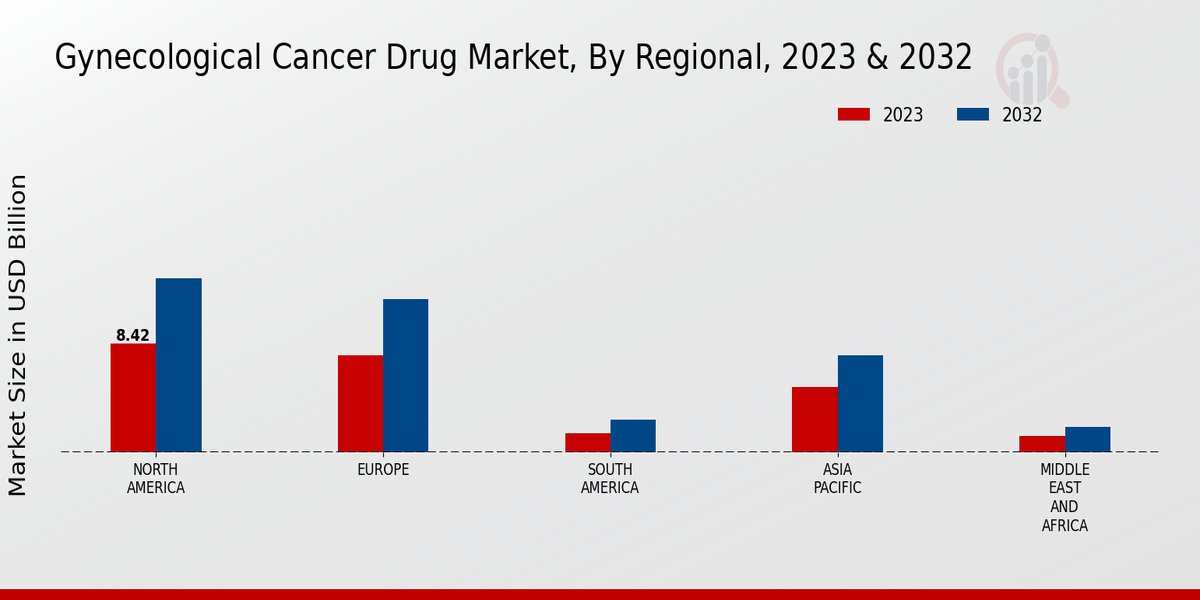Market Trends and Charts
Growing Awareness and Education
The rising awareness and education surrounding gynecological cancers significantly impact the Global Gynecological Cancer Drug Market Industry. Increased public knowledge about the symptoms, risk factors, and importance of early detection has led to more women seeking medical advice and screening. Campaigns aimed at educating women about gynecological health have proven effective in promoting early diagnosis, which is critical for successful treatment outcomes. This heightened awareness is likely to drive demand for effective drugs and therapies, contributing to the market's growth trajectory. As awareness continues to expand, the industry is poised for further development and innovation.
Government Initiatives and Funding
Government initiatives and funding play a crucial role in shaping the Global Gynecological Cancer Drug Market Industry. Various countries are increasing their investments in cancer research and treatment programs, aiming to reduce the burden of gynecological cancers. For example, national health organizations are allocating substantial budgets to support clinical trials and the development of new therapies. These efforts not only enhance the availability of treatment options but also foster collaboration between public and private sectors. As a result, the market is likely to experience sustained growth, with a projected CAGR of 5.12% from 2025 to 2035, reflecting the commitment to improving cancer care.
Advancements in Treatment Modalities
Innovations in treatment modalities significantly influence the Global Gynecological Cancer Drug Market Industry. The introduction of targeted therapies, immunotherapies, and personalized medicine has transformed the landscape of cancer treatment. These advancements not only improve patient outcomes but also enhance the efficacy of existing drugs. For instance, the development of PARP inhibitors has shown promise in treating ovarian cancer, leading to increased survival rates. As research continues to evolve, the market is expected to grow, potentially reaching 40.5 USD Billion by 2035. This growth underscores the importance of ongoing investment in research and development to meet the needs of patients.
Emerging Markets and Demographic Shifts
Emerging markets and demographic shifts are pivotal drivers of the Global Gynecological Cancer Drug Market Industry. As populations in developing regions grow and age, the incidence of gynecological cancers is expected to rise. Countries in Asia-Pacific and Latin America are witnessing significant increases in cancer cases, prompting a need for accessible treatment options. Additionally, urbanization and lifestyle changes contribute to the changing landscape of cancer prevalence. Pharmaceutical companies are increasingly focusing on these emerging markets, recognizing the potential for growth. This shift is likely to result in a more diverse range of treatment options becoming available globally.
Rising Incidence of Gynecological Cancers
The Global Gynecological Cancer Drug Market Industry experiences growth driven by the increasing incidence of gynecological cancers, including ovarian, cervical, and uterine cancers. According to health data, the prevalence of these cancers is rising globally, with millions of new cases diagnosed each year. This trend necessitates the development and availability of effective treatment options, thereby expanding the market. As awareness and screening programs improve, more cases are likely to be detected, further propelling the demand for innovative therapies. The market is projected to reach 23.4 USD Billion by 2024, reflecting the urgent need for advanced treatment solutions.












